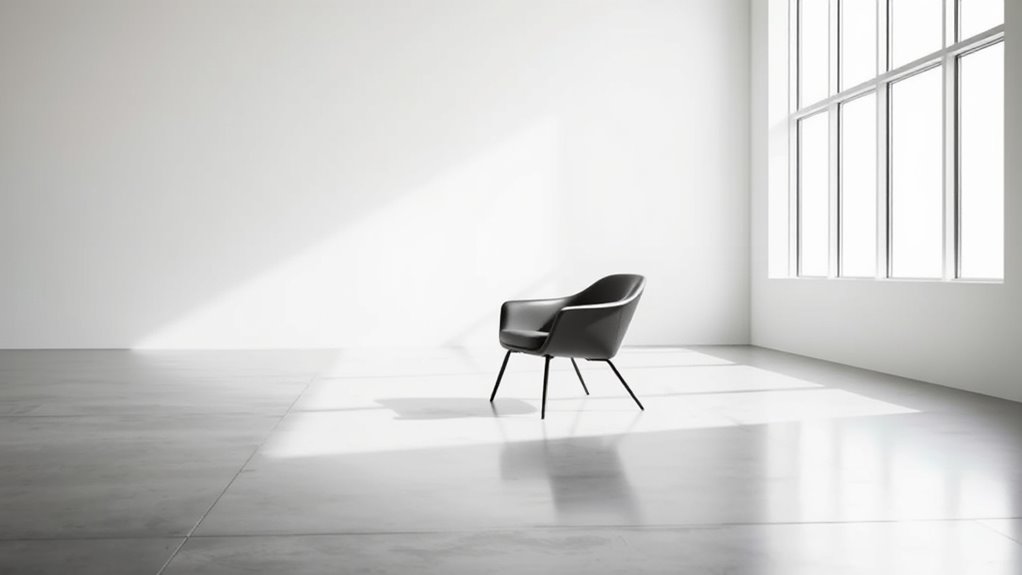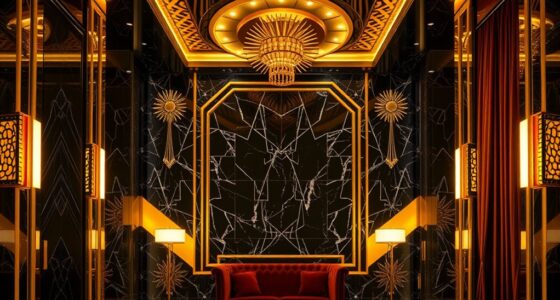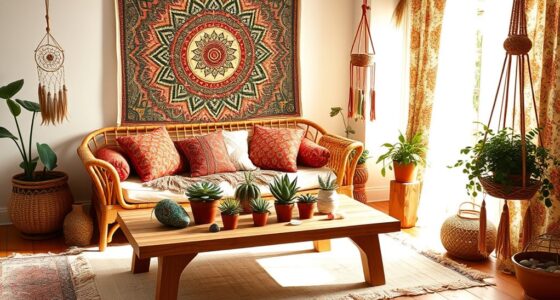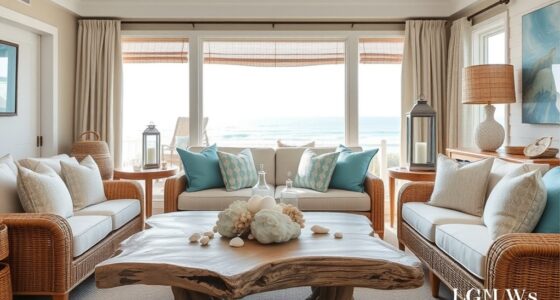Minimalism isn’t as simple as just reducing clutter because it’s deeply personal and influenced by your values, emotions, and life circumstances. It involves more than decluttering; it’s about aligning your possessions with your priorities, managing emotional attachments, and steering through real-world constraints like budgets or responsibilities. Plus, it can evoke feelings of guilt or overwhelm, making it a complex, ongoing process. If you want to understand why minimalism is more than meets the eye, keep exploring.
Key Takeaways
- Minimalism is highly personal, shaped by individual values, priorities, and life circumstances, making it more complex than a one-size-fits-all approach.
- Emotional attachments, memories, and psychological factors can complicate decluttering and adopting a minimalist lifestyle.
- Practical considerations like socioeconomic status, household needs, and responsibilities influence what minimalism looks like for each person.
- Focusing solely on reducing possessions can overlook the importance of purpose, fulfillment, and aligning with core life values.
- Minimalism is an ongoing process that requires flexibility, self-compassion, and adaptation, rather than a fixed, straightforward goal.
The Myth of a One-Size-Fits-All Approach
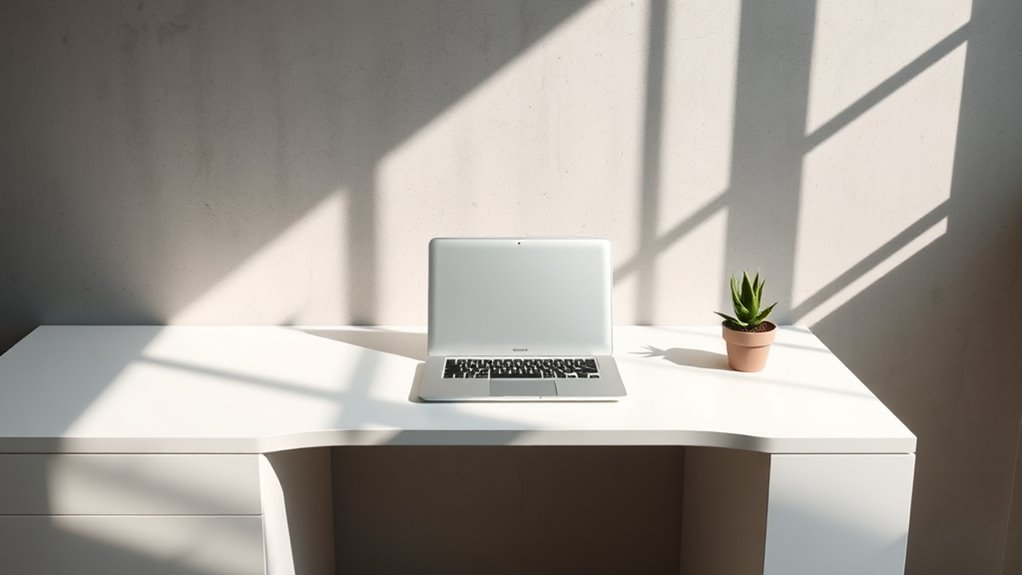
Many people assume that minimalism can be applied uniformly, but in reality, there’s no one-size-fits-all formula. One person’s idea of less might be different from another’s, because living with less depends on your life, priorities, and circumstances. It’s not just about getting rid of much stuff; it’s about removing the things that really matter to you, making us spend time on what adds value to our lives. If you’re constantly trying to rid yourself of excess, you might miss the point—focusing only on quantity rather than quality. Whether you have a lot of things or just one, what matters is that you live your life intentionally. Less clutter can make us feel freer, but how much less is really up to you. Additionally, understanding the significance of quality over quantity can help tailor your approach to minimalism in a way that truly benefits you. Recognizing that seed allergy risks and other health considerations differ from person to person underscores the importance of customizing minimalism to your unique needs and health circumstances. Incorporating personalized approaches ensures that your minimalist lifestyle aligns with your physical and mental well-being. For example, some might find that integrating a simple, functional electric bike can significantly enhance their mobility without adding clutter. Moreover, being aware of local regulations and safe practices can ensure your minimalist lifestyle remains sustainable and respectful of the environment.
Beyond Owning Less: Personal Values and Priorities
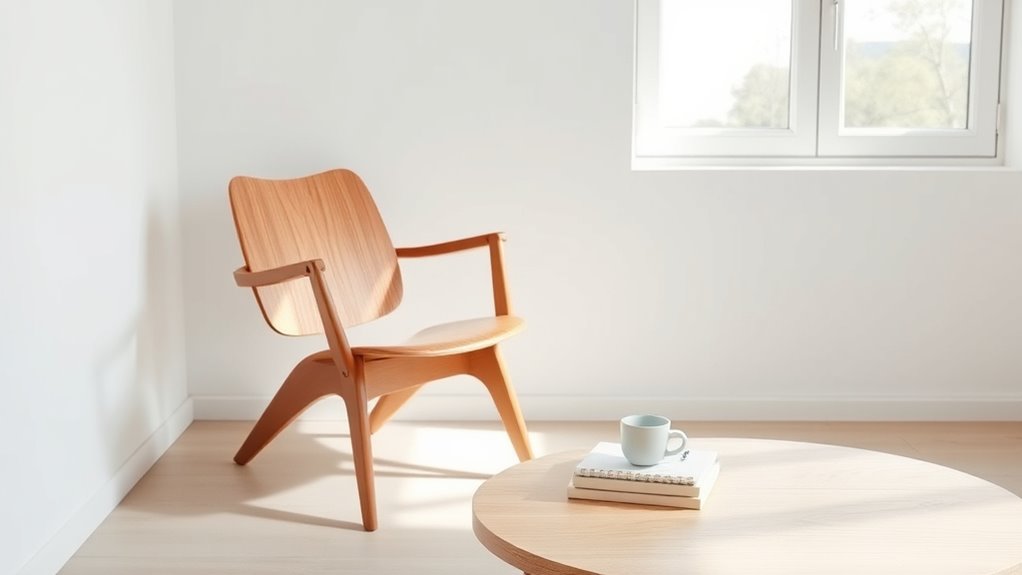
Your values and priorities guide what you choose to keep and let go of, making minimalism personal rather than universal. By focusing on what truly matters to you, you create a lifestyle that aligns with your passions and goals. This approach guarantees minimalism isn’t just about owning less, but about living more intentionally. Understanding the importance of personal values can help you tailor your minimalist journey to reflect what truly matters in your life, especially when considering mental, emotional, and spiritual well-being as key components of personal development. Incorporating mindful decluttering strategies, such as regularly reassessing your belongings, can further support a sustainable and meaningful minimalist lifestyle aligned with your core values. Additionally, recognizing how vehicle tuning modifications can enhance your driving experience exemplifies how personal preferences shape our choices and priorities.
Values Over Valuables
Why does minimalism often feel more meaningful when it centers on personal values rather than just reducing possessions? Because shifting focus from things to what truly matters helps clarify your priorities. When you align your daily choices with your core values, life gains purpose beyond material accumulation. You might own fewer things, but those belongings better reflect your passions and beliefs, leading to greater fulfillment. Instead of chasing more valuables, you invest in relationships and experiences that resonate with your authentic self. This approach ensures that minimalism isn’t just about decluttering but about living intentionally. By defining your values, you create a life where possessions support your well-being, turning minimalism into a meaningful journey rather than a simple act of owning less. Additionally, understanding cybersecurity vulnerabilities during digital disruptions underscores the importance of safeguarding your personal information as part of your values-driven lifestyle. Recognizing the influence of AI technologies in shaping our choices can further help align your possessions and habits with your deeper principles. Developing an awareness of contrast ratio and color accuracy in your environment can also enhance your overall well-being by creating spaces that reflect your aesthetic preferences and support your mental health. Incorporating natural materials and authentic decor in your environment can further reinforce your commitment to living in harmony with your values, and being mindful of privacy policies ensures that your digital footprint aligns with your personal ethics.
Priorities Shape Lifestyle
Have you ever noticed how your core priorities influence every aspect of your life? When you identify what’s truly important—like family, health, or growth—it guides your choices and shapes your lifestyle. Instead of focusing solely on owning less, you align your actions with these values, making minimalism more meaningful. Clarifying your priorities prevents minimalism from becoming just an aesthetic trend and helps you stay focused on long-term goals. Research shows that understanding your core values brings greater satisfaction and purpose. By emphasizing priorities over possessions, you create space for what genuinely matters. This shift ensures your minimalist journey isn’t about deprivation but about intentionally fostering a life that reflects your deepest convictions. Recognizing the different cookie categories used on websites can also help you make more informed decisions about your online privacy and browsing experience. Additionally, understanding how personal values influence your lifestyle can lead to more authentic and sustainable dog names choices that resonate with your identity. Incorporating intentional indoor gardening practices, such as selecting the right planters, can further support your values of sustainability and well-being. For example, choosing eco-friendly home decor items aligns with your commitment to environmental responsibility.
The Emotional Complexity of Decluttering
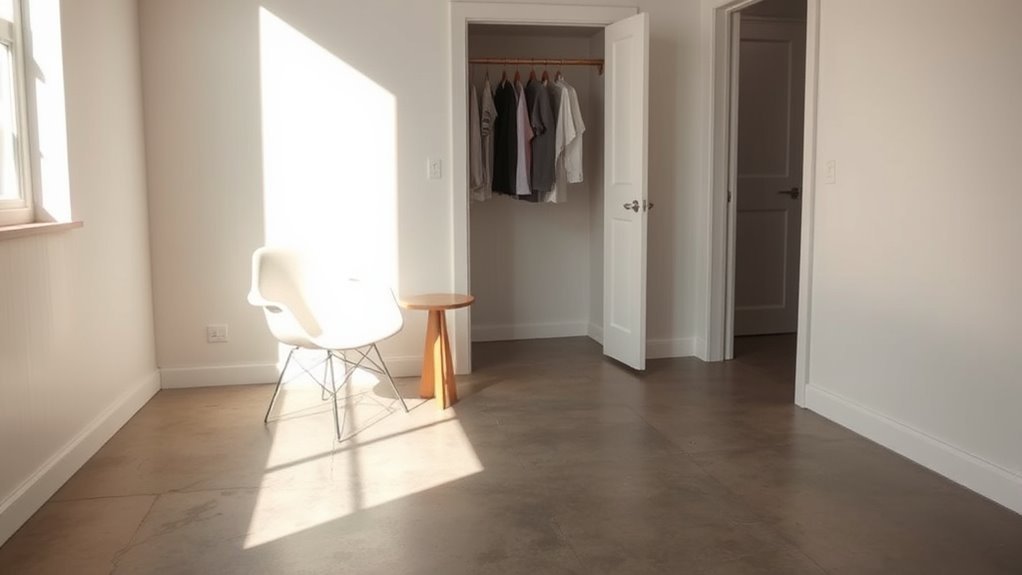
Decluttering is rarely a purely practical task; it often stirs up deep emotional responses that can complicate the process. You might feel guilt, attachment, or regret as you uncover possessions linked to memories or milestones. These feelings make decisions harder, especially when items symbolize relationships or personal growth. Emotional challenges can lead to procrastination or second-guessing about what to keep or discard. Recognizing these feelings is essential to moving forward. To navigate this complexity, consider: 1. Acknowledging your emotions without judgment to prevent them from dictating your choices. 2. Reflecting on the significance of each item rather than its physical presence. 3. Developing a compassionate mindset to accept that letting go is part of the process, not a failure. Additionally, understanding that emotional dysregulation, as seen in conditions like BPD, can intensify attachment to possessions and complicate decision-making emotional dysregulation. Recognizing the role of holistic strategies, such as emotional support and mindfulness practices, can also facilitate a healthier decluttering journey.
When Minimalism Meets Real-Life Constraints
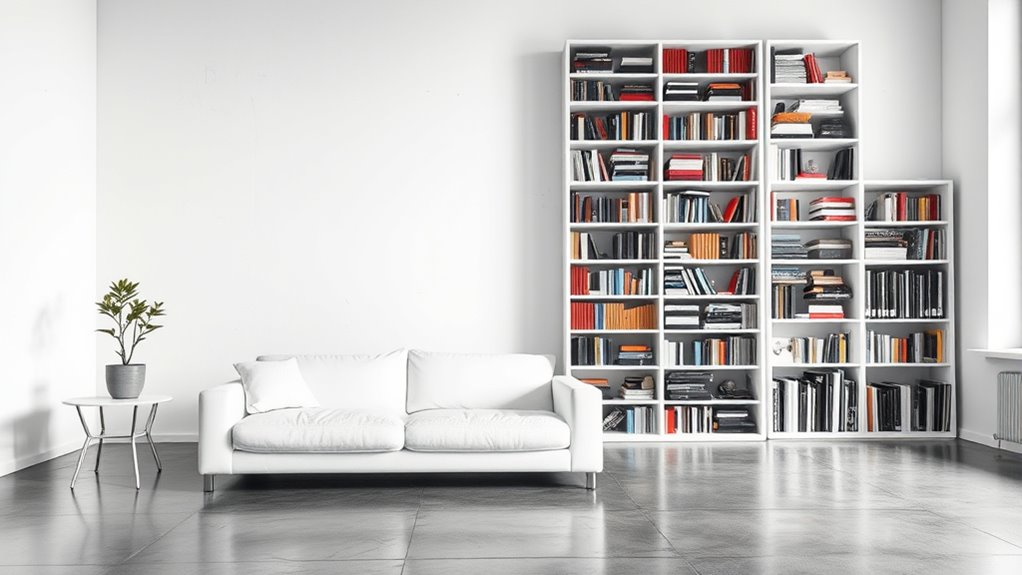
While emotional responses to decluttering can complicate the process, real-life constraints often add another layer of complexity to adopting minimalism. Your income, household size, and personal responsibilities influence what’s practical to keep. For example, single parents or retirees might need more possessions to support their daily needs, challenging minimalist ideals. If your job requires specific tools or uniforms, owning certain items becomes necessary, even if they don’t fit minimalist principles. Life circumstances like family needs or hobbies can also demand more belongings. It’s important to recognize that minimalism isn’t a one-size-fits-all solution. Instead, it should adapt to your unique situation. Respecting your personal limitations helps make minimalism a helpful, realistic approach rather than an unattainable goal.
The Danger of Equating Simplicity With Deprivation
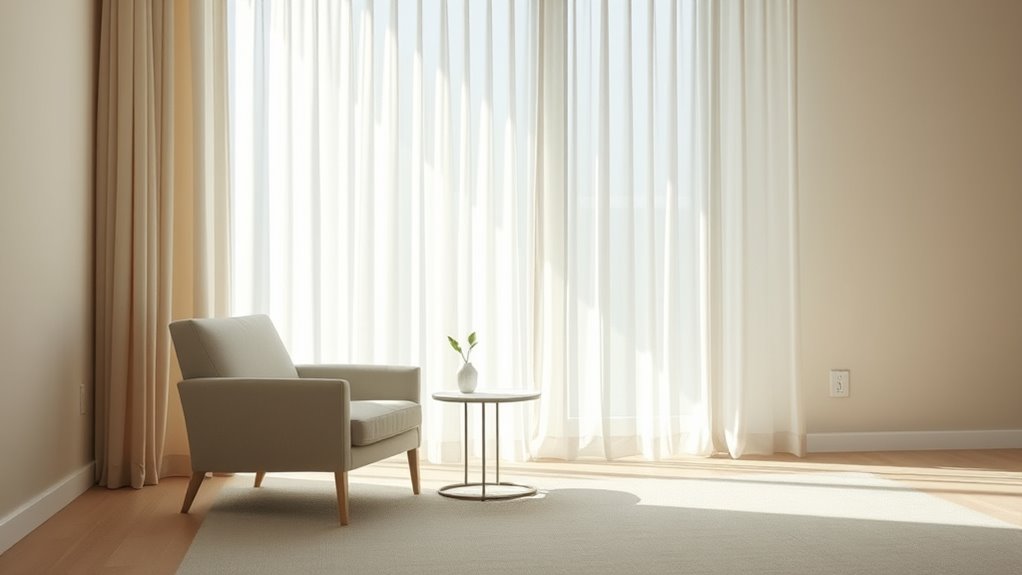
Many people equate simplicity with deprivation, but this misconception can lead to unnecessary suffering. True minimalism is about purposeful choices, not denying yourself. When you see simplicity as deprivation, you focus on what you’ve lost instead of what you’ve gained. This mindset can cause emotional distress and make it harder to sustain a minimalist lifestyle. To deepen your understanding:
- Deprivation involves removing items or experiences solely to punish yourself, not for clarity or well-being.
- Purposeful simplicity curates possessions based on their value and usefulness, enhancing happiness.
- Studies show those who intentionally simplify report higher satisfaction, unlike those who equate it with austerity.
Recognizing the difference helps you embrace minimalism as a positive, life-affirming choice.
Minimalism as a Reflection of Self, Not Societal Ideals
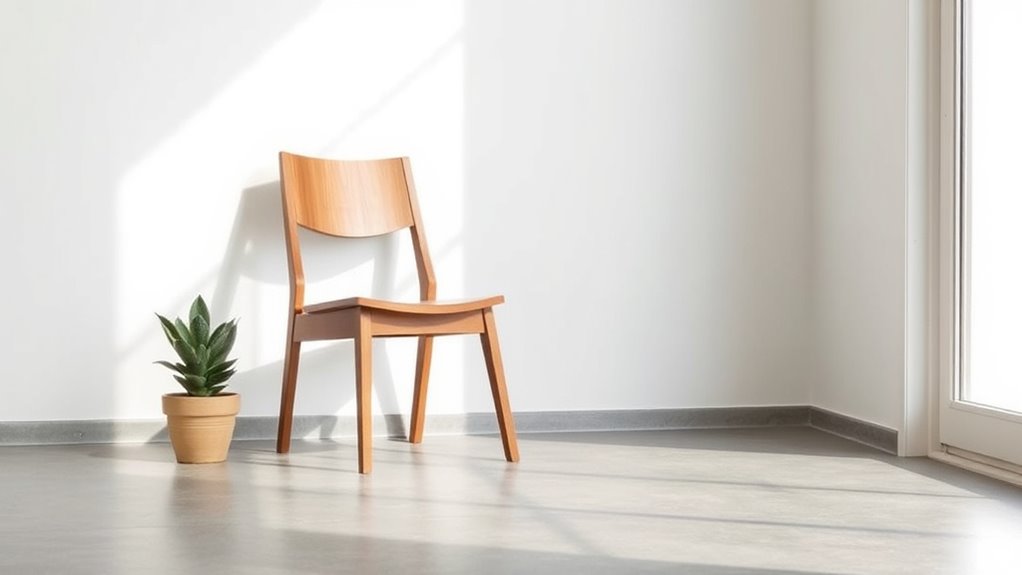
Your choices in minimalism reflect your personal values and passions, not just societal expectations. By focusing on what truly matters to you, you challenge the idea that material success defines happiness. Embracing your unique path helps you live intentionally, respecting your individual circumstances.
Personal Values Drive Choices
Minimalism isn’t about following a one-size-fits-all blueprint; instead, it reflects your personal values and what matters most to you. Your core beliefs shape your choices about possessions, time, and energy, making minimalism a deeply individual journey. Rather than adhering to societal trends, you decide what to keep based on what feels meaningful. Your values act as a compass, guiding whether you focus on relationships, personal growth, or simplicity itself. This means that:
- Decluttering decisions are rooted in what’s truly important to you.
- Your lifestyle choices mirror your authentic priorities, not external minimalist standards.
- Minimalism becomes an expression of self, aligning your environment with your inner values.
Challenging Societal Norms
Challenging societal norms is essential when embracing minimalism as a true reflection of yourself. Society often equates success with material possessions, pushing you toward consumerism and external validation. To live authentically, you need to question these messages and resist the pressure to accumulate wealth or status symbols. True minimalism involves a mindful rejection of cultural ideals that prioritize achievement and material abundance. It’s about defining worth and happiness on your own terms, not according to societal standards. Remember, minimalism isn’t a privilege reserved for the wealthy; it’s a personal choice rooted in self-awareness. By challenging these norms, you create space for genuine purpose and fulfillment, making minimalism a reflection of your values rather than societal expectations.
Embracing Unique Paths
When you question societal norms about success and possessions, you open the door to forging a path that truly reflects who you are. Embracing your unique minimalist journey means recognizing that it isn’t a one-size-fits-all process. Your version of minimalism might involve decluttering belongings, simplifying routines, or reducing digital clutter—whichever aligns with your life. To deepen this understanding, consider:
- Reflecting on your core values to determine what possessions or routines genuinely serve you.
- Avoiding comparisons by acknowledging that each person’s path is shaped by personal circumstances.
- Focusing on what brings purpose and fulfillment, rather than societal expectations or trends.
This personalized approach ensures your minimalist lifestyle authentically mirrors your passions and needs.
The Privilege and Accessibility of Minimalist Living
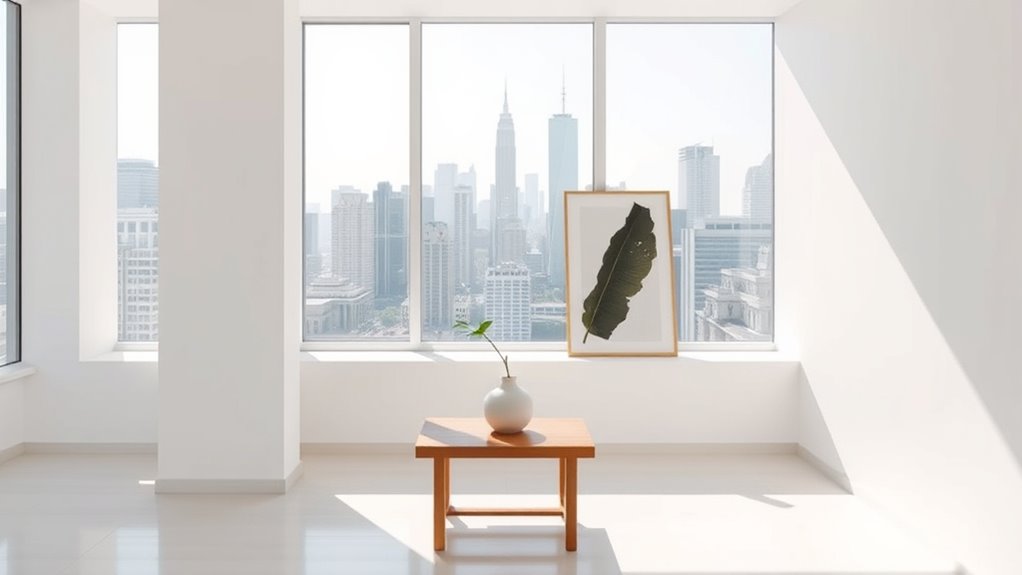
Although minimalist living is often celebrated for its simplicity and aesthetic appeal, it’s important to recognize that access to this lifestyle isn’t equal for everyone. Many images of minimalism feature wealthy individuals with designer spaces, creating the illusion that minimalism is exclusive to the privileged. For those with limited financial means or complex household needs, adopting minimalist ideals can seem impractical or impossible. The idea of “less is more” often reflects a privileged perspective, overlooking the realities faced by people in different socioeconomic or cultural situations. Life circumstances like single parenting, caregiving, or working multiple jobs make decluttering or downsizing unfeasible. True accessibility means recognizing that minimalism should be a personal choice aligned with your needs and constraints, not a societal standard rooted in privilege.
Managing Expectations in the Pursuit of Simplicity
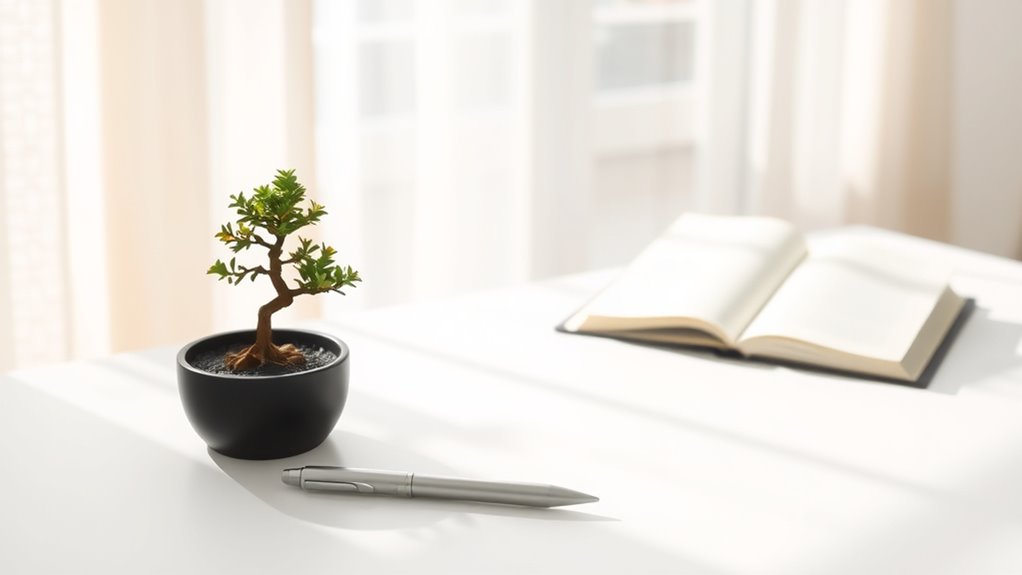
While accessibility to minimalism varies based on personal circumstances, managing your expectations plays a key role in sustaining your progress. Recognizing that minimalism is a gradual journey helps prevent burnout and keeps you motivated. Set realistic goals to avoid frustration, understanding that decluttering and simplifying can take months or years. Accept that life’s unpredictability might slow your progress, so stay flexible and adapt your plans without disappointment. To deepen your approach:
Managing expectations helps sustain minimalism; progress is gradual, flexible, and personalized.
- Break your goals into small, achievable milestones.
- Acknowledge that setbacks are part of the process.
- Tailor your expectations to your unique circumstances, not societal ideals.
The Ongoing Journey: Embracing Mess and Imperfection
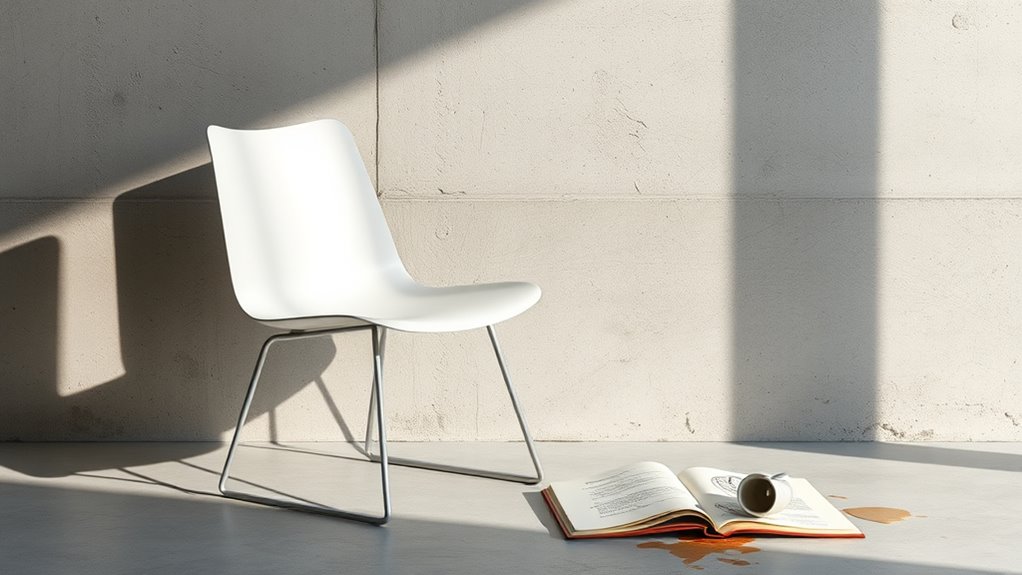
You’ll find that life’s messiness never fully disappears, no matter how much you declutter. Emotional ups and downs are part of the journey, not signs of failure. Embracing progress over perfection helps you stay grounded amid the chaos.
Embrace Life’s Messiness
Embracing life’s messiness means accepting that chaos and imperfection are natural parts of your journey. No matter how much you declutter or simplify, life will still throw challenges your way—bad days, hormonal shifts, or relationship struggles. These are unavoidable, and trying to eliminate them only leads to frustration. Recognizing this helps you develop emotional resilience and grow beyond material organization. To deepen this understanding:
- Accept that imperfections are part of authentic living, not flaws to fix.
- Understand that external chaos, like in 2020, persists regardless of physical clutter.
- Realize that feeling, including frustration and joy, makes your experience real and meaningful.
Challenges of Emotional Rollercoasters
Even as you learn to accept life’s messiness and let go of perfection, emotional ups and downs can still catch you off guard. No matter how much you declutter your space, feelings of chaos, stress, or overwhelm may persist. Bad days, hormonal shifts, or unexpected setbacks are part of being human and don’t disappear with physical minimalism. The emotional rollercoaster is a natural aspect of growth, showing that imperfection is unavoidable. Embracing mess means recognizing that perfection isn’t the goal; instead, honesty and resilience matter most. This ongoing journey demands patience and self-compassion. You’ll face moments of doubt and emotional turbulence, but these are opportunities to deepen your understanding that minimalism isn’t just about physical clutter—it’s about accepting and traversing your inner landscape.
Progress Over Perfection
Progress over perfection means understanding that the journey to minimalism is ongoing and inherently imperfect. You won’t achieve a spotless space or flawless routine overnight. Instead, focus on small, consistent improvements that build over time. Recognizing this helps you stay patient and avoid burnout. Embracing mess and imperfection reduces stress, making it easier to maintain your minimalist mindset long-term. Remember, your space will have phases of chaos and calm; both are part of growth. Accepting that perfection is unrealistic encourages self-compassion and resilience. To deepen your understanding:
- Celebrate small wins rather than waiting for perfection.
- View setbacks as part of the learning process.
- Focus on progress, not flawlessness, to stay motivated.
Balancing Minimalism With Meaningful Life Experiences
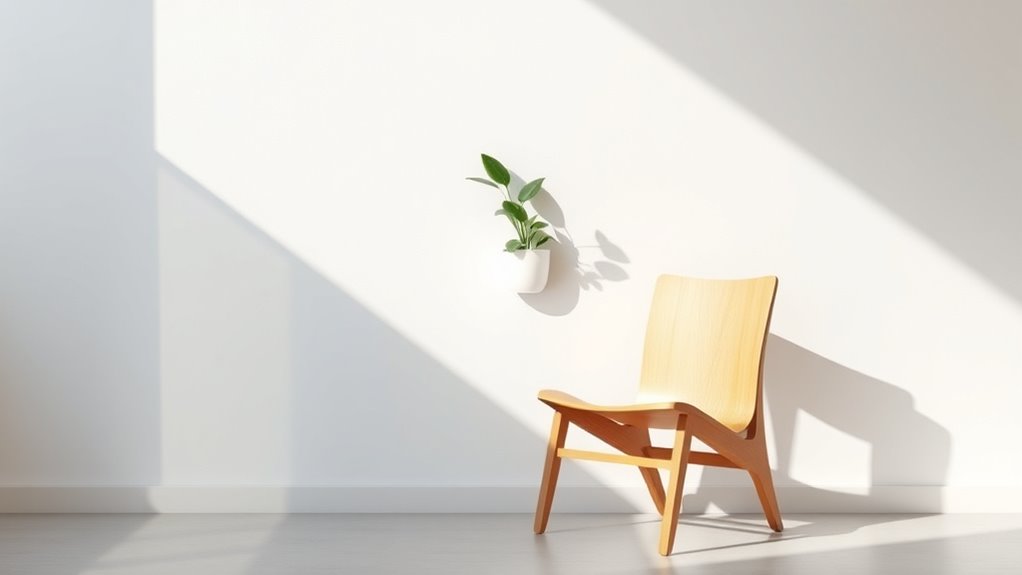
Balancing minimalism with meaningful life experiences requires intentionally choosing possessions and activities that reflect your core values rather than simply reducing clutter. Focus on what truly matters, like travel, hobbies, or time with loved ones, to foster deeper connections and lasting memories. Prioritizing quality over quantity in possessions allows you to invest more in experiences that bring fulfillment. Regular reflection helps ensure your routines and belongings support your long-term happiness. To illustrate, consider the following:
| Possessions | Experiences |
|---|---|
| Quality over quantity | Travel and adventures |
| Practical essentials | Personal growth activities |
| Sentimental items | Meaningful connections |
| Routine items | Special moments with loved ones |
This balance helps you create a life filled with purpose and joy, aligned with your values.
Frequently Asked Questions
Why Is Minimalism so Difficult?
You find minimalism difficult because it challenges your emotional ties to possessions and societal pressures to keep more. Letting go of items triggers FOMO and regret, making it hard to stay committed. It also requires ongoing effort and emotional resilience to confront underlying reasons for clutter. Overcoming these hurdles takes patience, self-awareness, and a willingness to face discomfort, which is why the journey isn’t as simple as it seems.
What Is the Dark Side of Minimalism?
The dark side of minimalism reveals itself when you face emotional struggles amid decluttering, feeling torn between past attachments and new simplicity. You might face social judgment or loneliness if your choices differ from others. Guilt can creep in when progress stalls, and perfectionism may lead to obsessive behavior. Ultimately, minimalism can mask deeper issues, making you confront more than just possessions—your habits, emotions, and sense of identity.
What Are the Criticisms of Minimalism?
You might see minimalism as straightforward, but critics point out it’s not always accessible or practical for everyone. It can seem elitist, tied to wealth, or ignore emotional ties to possessions. Some argue it promotes consumerism as a status symbol, while others say it becomes an obsession with decluttering. Additionally, it overlooks systemic issues like inequality and environmental concerns, making it more complex than it appears at first glance.
What Is the Difference Between Minimalism and Simple?
Did you know that over 70% of people feel overwhelmed by clutter? When you compare minimalism and simplicity, you see that minimalism focuses on reducing possessions, often with strict limits. Simplicity, however, is about aligning your life with what truly matters, making it more flexible and personal. You actively choose what brings purpose and joy, creating a lifestyle that’s easier and more meaningful, beyond just decluttering.
Conclusion
Remember, minimalism isn’t a one-size-fits-all solution. It’s about finding what truly matters to you, not just decluttering for the sake of simplicity. Embrace your unique journey, knowing that “less is more” only when it brings meaning and joy. Don’t rush or compare—your path is yours alone. Keep adjusting, learning, and growing, because in the end, true minimalism is about living intentionally amidst life’s beautiful mess.
